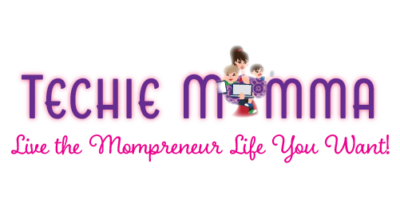Think About – Whom You’re Creating Content For
Who are your creating the content for? Is it solely a personal site for you to keep a sort of diary? Then the audience is you and the goals are your own self-care most likely. If your audience is larger, then who does your audience consist of? Gender, age, lifestyle other demographics will help in developing your strategy.
You may ask the following questions:
- What problem or pain point am I going to solve for my audience?
- What makes me unique and different from others in my area or niche?
- What content formats do I want to focus on?
- What channels do I want to publish to?
- How do I want to manage creation and publication?
Why Do I Need A Content Creation Strategy
A typical content strategy plan will answer the questions:
- Who is your audience? These are usually based on market segments and certain types of content will target specific segments.
- What channels will you use?
- What metrics will you use to measure success and ROI?
- What resources do you have?
- What pain points will you solve?
Ace Your Strategy in 9 Steps
1. Mission to Mars
Having a specific mission statement and knowing it deeply is so important. Even if no one ever sees it, you need to know what your core mission is. Your mission will become central and will guide all your marketing.
What is your mission? Is this personal? Do you want to help others somehow? Is it a passion you are wanting to share? Is it a struggle that you are dealing with and want to offer tips and community?
2. Gooooooaaaaal
Hand in hand with a mission is to determine your goal at every stage. Goals for the month, quarter, year. Ideally you want to make the goal measurable and concise in order to easily know if you achieved it or not.
What is your goal? Do you want to increase traffic? Have users sign up for email? Purchase an item?
The best way to achieve goals is to make them measurable and specific by setting key performance indicators (KPIs) for your content marketing strategy. With KPIs you achieve goals by developing milestones that you can check off. KPIs and the corresponding milestones will include what you want to achieve in terms of traffic, SEO, sales, revenue, and different aspects like social media metrics and email marketing.
Here are some examples, you want to make KPIs specific with numerical (usually) goals
- Hit a certain revenue target within the month, quarter, or year.
- Get more signups for your lead magnet as a sign that you’re getting more high quality leads
- Get a certain number of new email subscribers
- See an increase in site traffic and in engagement with your onsite content
- Improve the search ranking of some of your key pages to help boost traffic
- Get a certain number of mentions, shares and comments for your pillar content
- Be invited to participate in certain key industry events
3. It’s all about the Audience
Knowing your audience is so important because that will tell you where they hang out online or otherwise, what their preferences are for communication and what they are passionate about or their pain points are. If you remember we are trying to solve an issue and be the authoritative person for that issue.
A great way to explore what your audience might look like is to create Personas for your audience groups so you can imagine a Sally that does x, y, z and you can target all the Sallys in the world.
“Knowing your audience is key to content marketing success.”
Martin Jones , Social Media, Content & Digital Marketing Strategist
4. Content Channels
Next, think about your content channels There are many and depending on your audience you may use one or two or all of them.
- Social media
- Pamphlets
- Search engine ads
- Website
5. Content Types
Just like content channels there are many types of content. From blog posts to video to larger commitments like challenges and eBooks.
- Blog posts
- Long Form Articles
- List Articles
- Video
- Infographics
- Photos
- Ebooks
- Podcasts
- Webinar
- eCourse
- Challenge
- Presentation
- Opt-Ins
6. Content Calendar
There are many many many ways to create a content calendar. These are just some tools that can be used. I personally love PublishPress because it stays all in WordPress but I use Trello and AirTable for other project management needs.
7. Create Content
You have to create content and create content and create content. Here are some tips on how to find content to write about, how to maintain a schedule and characteristics of epic content!!
Finding Content to Write About
- Check out competitors successful blog posts
- Current Industry News
- Social Media Hot Topics
- Use Google Keyword Planner
- Topics that have the most downloads, comments and views
- Answer questions posted by folks
- Ask your readers and audience
Sticking to Content Creation
- Create New Content Every Day
- Batch The Content Creation Process
- Reuse Your Old Content
Do you have evergreen content? Enhance old content, link to some of your newer blog posts, optimize SEO, conduct further research and edit old posts for a new twist. - Give Each Step Its Own Day
- Think of the idea
- Write the outline
- Write the intro
- Write the body
- Add links to the body
- Write the conclusion
- Delegate Content Creation
- Use A Themed Content Creation Calendar
- Keep Yourself Accountable
Create Epic Content
- It earns a lot of shares.
- It offers actionable information.
- It is exhaustive.
- It has a long shelf life.
- It delivers sustainable results for the long term.
- It differentiates the brand as a thought leader in the niche.
- It develops trust and credibility for your business.
8. Distribute / Market Content
Once you have the content make sure you have ways to distribute to various channels discussed above and market the content. You can use scheduling tools within WordPress to schedule publishing dates. Jetpack will also post automatically to Facebook and Twitter. There are a number of tools that can also help you schedule such as Tailwind, Apphi (my new favorite for Instagram — use link for 10% off), and Crowdfire offers several tools to curate and schedule. Find your favorite and get scheduling.
9. Measure Results
How did your post perform? Did you get some traffic to the new post? Did you get shares and comments on your social media posts? Use Google Analytics to get a more detailed analysis of how the post is doing.
Once you know how something performed you can then go back and update those popular posts or go through the process again.
Resources
- Never Run Out of Ideas: 7 Content Creation Strategies for Your Blog
- How to Get Started on Your Content Marketing Strategy | Sprout Social
- Content Strategy: A Development Guide
- 7 Effective Content Creation Strategies | Marc’s Blog
- 7 Step Content Creation Strategy for Epic Content Marketing
- How to Develop a Content Strategy: A Start-to-Finish Guide
- Make My Persona
- Blog Title Generator | BlogAbout by IMPACT
- How to Do Content Marketing as a Mom Blogger | Girl Mom Chaos
- My Blog Post Template to Creating Amazing Blog Posts (As a New Blogger) – Twins Mommy


 BY TECHIE MAMMA
BY TECHIE MAMMA